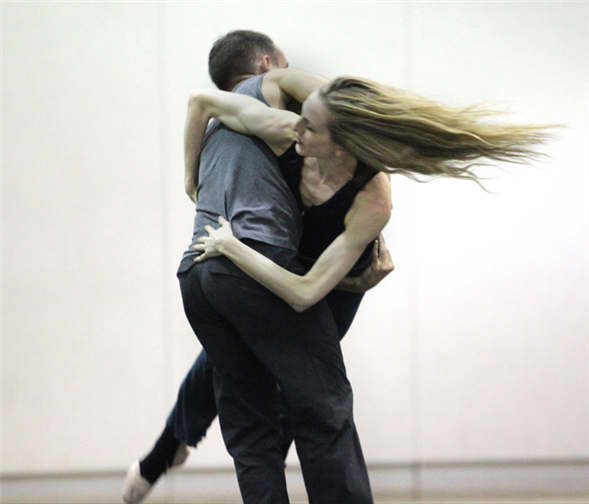Wendy Whelan pushes her own boundaries
---
The dance world knows Wendy Whelan as a dazzling principal for New York City Ballet. For three decades, she has been celebrated for her classical performances, which showcase her expert lines and committed control. She's also been lauded for her consistent ability to reinvent herself, so when she announced last year that her ballet career was winding down, there was no doubt she would reemerge somewhere new.
And now she's back. From May 26-31 at the Joyce Theater, Whelan performs a suite of four contemporary duets by four modern dance choreographers in
Wendy Whelan/Restless Creature. Joined on stage by Alejandro Cerrudo (Hubbard Street Dance Chicago), Joshua Beamish (MOVE:the company), Kyle Abraham(Abraham.In.Motion.) and Brian Brooks (Brian Brooks Moving Company), she will not only showcase how new dance voices challenge and mold her "rock-solid" technique, but also have the rare opportunity to perform with the choreographers themselves.
Famous for a blend of sinewy and staccato movement that has been called "street-infused contemporary," Kyle Abraham found a dialogue with Whelan in
The Serpent and the Smoke that overcame the supposed divisions between "modern dance" and "ballet." Abraham says, "There's something about the movement manipulation that I find intriguing in duet. Something about that conversation – personal movement and dynamics – that steps outside compositional form for me. Her background is so different than mine, and her skill set – if I can even say skill set. It's great to play with the extreme of linear proficiency. My body isn't made for making certain types of lines. Knowing who I was dancing with, I wanted to play and make a work that lets things blur in a way."
As the choreographers themselves have noted, this showcase has pushed Whelan far beyond her comfort zone. "The way in which I use my spine is really different," Abraham says. "The way I play with weight is different from what you would be doing in ballet."
For
Conditional Sentences, Joshua Beamish calls for emotive vulnerability while using more angular, complex phrase work. He says, "I am sure that I challenged [Whelan] most with the complexity of my coordination and with the sheer number of isolations in the work. She has truly come so far with the vocabulary."
Of course, this kind of collaboration doesn't merely expand Whelan's artistry. It's also healthy for a dance community that can only grow through sharing. Audiences with strictly classical taste who are drawn to the show by Whelan's reputation may add "post-modern" to their list of options, while fans of the featured choreographers may find themselves looking at classical performance in a new way. "Maybe the folks that liked her doing works that are a further stretch from traditional classical ballet will find my work interesting, seeing it for the first time," says Abraham. "To me this is a show that could go down in history."
---
Emeri Fetzer writes frequently about dance for TDF Stages
Photos by Erin Baiano. Top Photo: Wendy Whelan and Brian Brooks.
